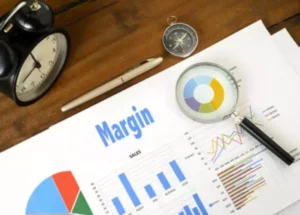Manufacturing Accounts Definition, Types, & Benefits
Content
- Budgeting Ensures That The Company Has The Finances To Carry Out Its Operations
- Overhead Cost Assignment
- Supply chain management: Definition, components, and technologies
- Hire Remote Bookkeeper, Accountant , Tax return Preparer or Admin Person
- Individual Business Owners
- What is the importance of accounting in manufacturing?
- What is a Manufacturing account?

The accounting department is responsible for recording and reporting financial transactions and providing advice on financial matters. The accounting department in a manufacturing firm has several accounting controls. One of the most important is verifying the accuracy and completeness of data collection. The accounting department also confirms that all transactions are recorded in the accounting records.
If the data doesn’t match up, it’s then possible to find the source of the problem, so that changes can be made. In this article we look at the importance of accounting in manufacturing, and describe some of the methods that can be used. “Product costs” are in blue boxes and the “period costs” are in the red box. Further, the “prime costs” have a yellow outline, while the “conversion costs” have an orange outline.
Budgeting Ensures That The Company Has The Finances To Carry Out Its Operations
Ideally, data should move freely between production lines and the back office, meaning you have accurate real-time data. The following schedule presents calculations that pertain to work in process. Katrina’s amounts are assumed, but actually would be derived from accounting records and/or by a physical counting process. A manufacturing account tracks a manufacturing business’s production costs, materials used, and inventory levels. Your cost of goods manufactured includes all direct and indirect costs that go into the products you finish producing during an accounting period. Like the cost of goods sold, it generally refers to direct materials, direct labor, and manufacturing overhead.

Businesses that make their own products must prepare a manufacturing account as part of their internal financial statements. A manufacturing account shows the cost of running and maintaining the factory. It is prepared to calculate the cost of goods produced during the year and it is also known as the production account. A relevant exception is inventory valuation which generally needs to conform to local jurisdictions for taxing purposes.
Overhead Cost Assignment
The primary type of accounting used in manufacturing is known as cost accounting. It’s a form of accounting that tracks production costs in a way that managers can use to inform business decisions. Bookkeeping is one of the most time-consuming aspects of manufacturing accounting. Maintaining accurate and organized records of all the transactions and costs involved in production can be incredibly laborious if you do it manually.

It is the examination of a company’s financial statements to ensure they are accurate. The accounting department of a manufacturing firm is responsible for recording and presenting the company’s financial information. In manufacturing, accounting plays an essential role in financial and cost accounting. Financial accounting focuses on reporting an organization’s financial information to external https://www.bookstime.com/articles/manufacturing-accounting users such as shareholders, creditors, and regulators. The chart of accounts is a record of the valid accounts you assign to the business units within your company’s reporting structure. When you set up your chart of accounts, you define the location of the accounts using automatic accounting instructions (AAIs) that indicate which number ranges represent assets, liabilities, and so on.
Supply chain management: Definition, components, and technologies
A direct cost is an expense that you can easily trace to product manufacturing processes. Direct labor includes the cost of workers who transform raw materials into finished goods. The wages of the worker who assembles the tables are direct labor, but not the salary of the janitor who keeps your factory clean.
Overall, accounting for manufacturing costs requires a specialized understanding of the unique aspects and complexities of the manufacturing industry. By employing appropriate accounting practices, businesses can accurately track costs, make informed decisions, and effectively manage their financial performance. Overall, the manufacturing accounting process is much more complex than accounting for most companies that produce no inventory. Having the right manufacturing accounting process can efficiently break down all of the operational costs within your company.
Hire Remote Bookkeeper, Accountant , Tax return Preparer or Admin Person
This approach to production costing helps with creating and refining budgets. When you can estimate how much it’ll cost to produce each unit, you can gauge your progress during each accounting period. The first-in-first-out (FIFO) inventory valuation method assumes that the first unit you manufacture is the first one you sell. FIFO is generally the most popular approach, especially for manufacturers of products with limited shelf lives. Getting expert tax and accounting advice is worthwhile for virtually every business. A Certified Public Accountant (CPA) with experience in your industry can provide valuable financial insight and ensure you meet your tax obligations.

Determine whether the price at which inventory goods are recorded is higher than their current market values in this activity, often known as the lower cost or market rule. We also manage VAT, BAS, Sales Tax and Indirect taxes for you so you are always https://www.bookstime.com/ ready at the end of the financial year. Therefore, the accounting department of any organization faces unique challenges that can significantly impact the business. Understanding what they are and developing strategies for addressing them is essential.
Individual Business Owners
Manufacturing organizations need to represent their crude materials and preparation costs. Yet, they additionally need to work out the estimation of the completed things they make. From new software applications to automated bookkeeping systems, keeping up with the latest technological advances can be a substantial challenge. Doing this will allow you to identify areas where improvements need to be made, and it will also help you measure the success of the accounting department. It will ensure that they know what they need to do and know how to do it correctly.
Of the goods entered into production assume that one third remains in production, one third is finished awaiting resale, and one third was completed and sold. This results in the $300,000 of factory depreciation being allocated evenly to work in process inventory, finished goods inventory, and cost of goods sold. All of the supporting schedules that were presented leading up to the income statement are ordinarily “internal use only” type documents. The details are rarely needed by external financial statement users who focus on the income statement.
What is the importance of accounting in manufacturing?
One big difference is that rather than simply selling stock or services,… Mattias is a content specialist with years of experience writing editorials, opinion pieces, and essays on a variety of topics. He is especially interested in environmental themes and his writing is often motivated by a passion to help entrepreneurs/manufacturers reduce waste and increase operational efficiencies. He has a highly informative writing style that does not sacrifice readability. Working closely with manufacturers on case studies and peering deeply into a plethora of manufacturing topics, Mattias always makes sure his writing is insightful and well-informed.
- Automating mundane tasks such as data entry and inventory tracking can help employees focus on more important tasks and reduce errors.
- The treasurer manages cash flow and investments and oversees banking activities and other related duties.
- The accounting department falls under the finance division because it provides information used in financial decision-making.
- It also includes tracking inventory levels and sales revenue from completed products.
This information is then used by cost accountants to determine the total cost of producing each item. The cost of goods sold Manufacturing account tracks information on all inventory items sold by the firm. This includes any items used in the production process but is not yet part of the finished product.